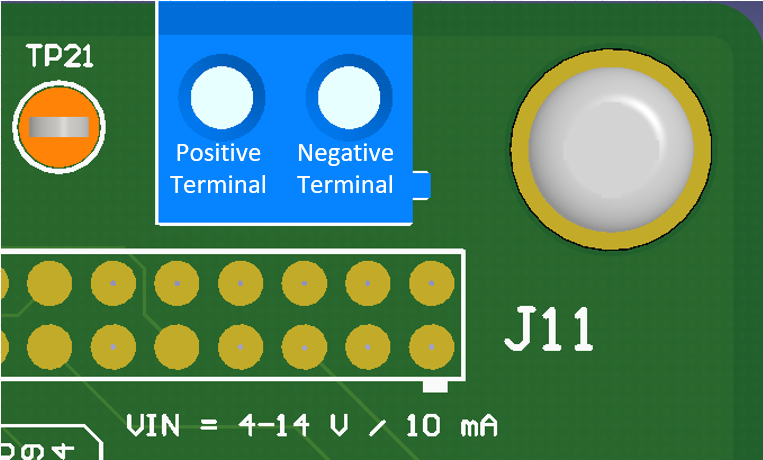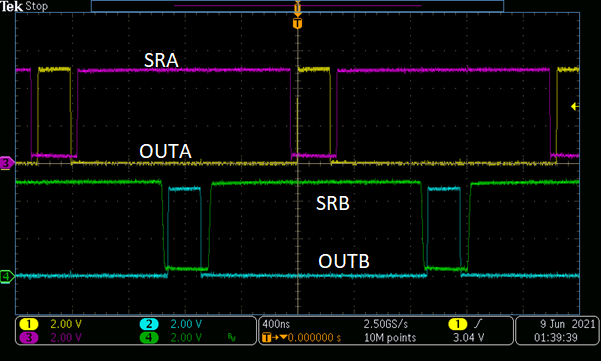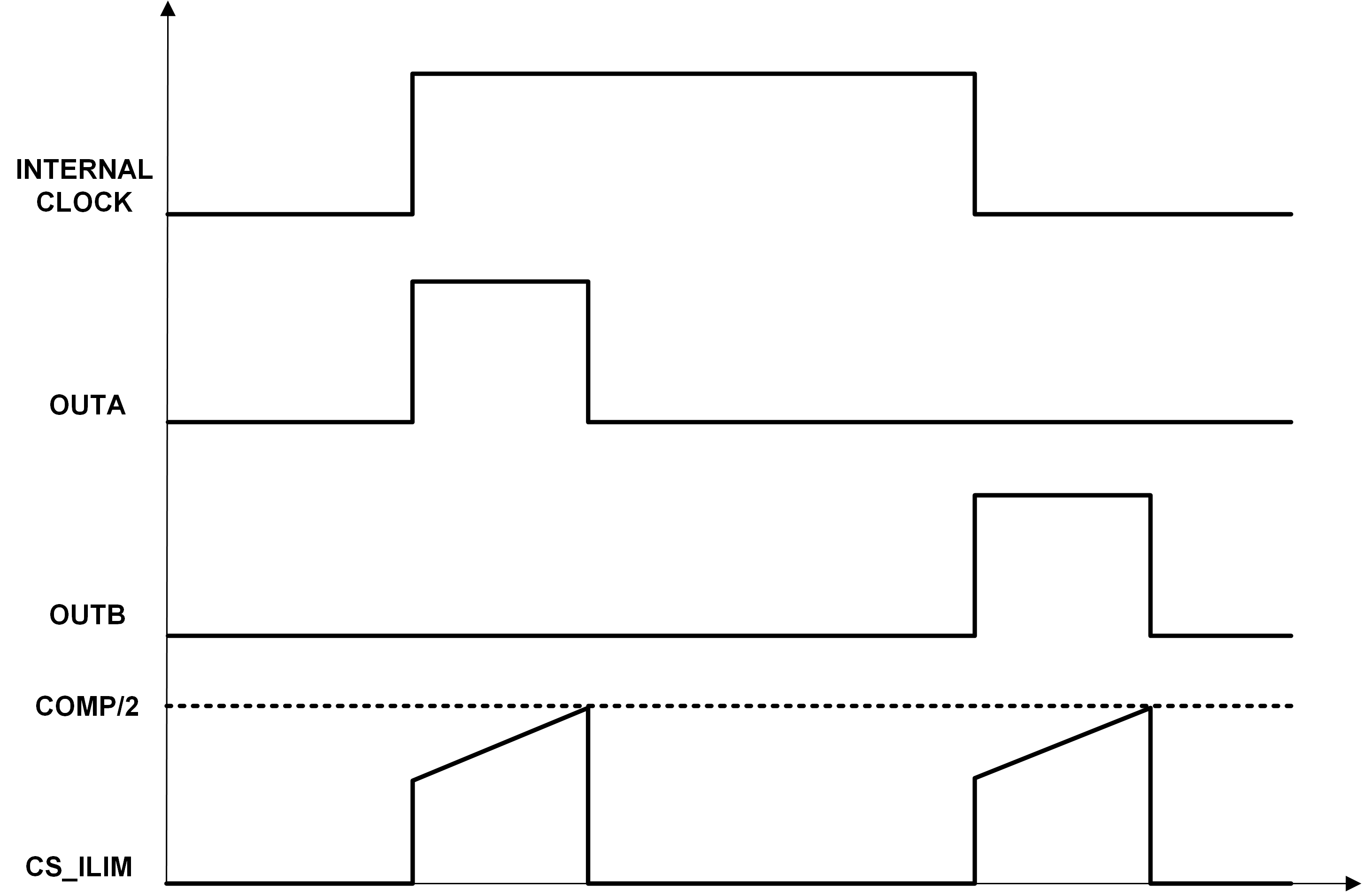SLVUBZ8 July 2021 TPS7H5001-SP
2 EVM Setup and Quick Start Guide
Default EVM Configuration lists the default configuration.
| Parameter | Specification |
|---|---|
| Input Power Supply | 4 V to 14V |
| Operating Temperature | 25°C |
| Switching Frequency | 500 kHz |
The TPS7H5001-SP can be quickly turned on and run using the connections shown in TPS7H5001-SP Connections.
| Terminal or Test Point | Voltage Source |
|---|---|
J11 (VIN) | 4 to 14 V input at 10 mA, See Positive and Negative Terminal for J11 for connections |
TP9 (COMP) | 1 V at < 10 mA (Input range can be –0.3 V to 3.3 V based on the TPS7H5001-SP Radiation-Hardness-Assured Si and GaN Dual Output Controller data sheet) |
Positive and Negative Terminal for J11 shows which terminal is the positive and negative on J11. Connect the positive input voltage to the positive terminal and GND to negative terminal.
 Figure 2-1 Positive and Negative Terminal for J11
Figure 2-1 Positive and Negative Terminal for J11The device should then turn on and operate in open loop mode as shown in TPS7H5001-SP Output. TPS7H50011-SP Output shows the output of TPS7H5001-SP measured on J1–J4 with the quick start method.
 Figure 2-2 TPS7H5001-SP Output
Figure 2-2 TPS7H5001-SP OutputThe operation of this mode is such that forcing the voltage on COMP will create an output on the TPS7H5001-SP. The duty cycle varies based on the input voltage on COMP as well as the triangle waveform created by the CS_LIM circuit, or any other waveform that the user decides to add to the CS_LIM pin. See Duty Cycle Generation for signal generation waveforms.
Duty Cycle Generation shows waveforms for input and output signal generations for the TPS7H5001-SP based on COMP voltage and CS_LIM pin voltage.
 Figure 2-3 Duty Cycle Generation
Figure 2-3 Duty Cycle Generation